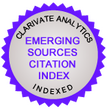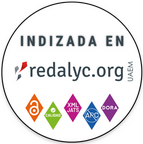The organizational culture in the aging process of educational work
DOI:
https://doi.org/10.13058/raep.2020.v21n3.1809Abstract
Population aging is one of the most significant phenomena in the 21st century and this phenomenon has important far-reaching impacts on society and organizations. Organizations and society face challenges with the increase and permanence of individuals at work and these reflexes can be perceived by the organizational culture. Organizational culture and its elements are also present in the academic environment, composed of multiple social interactions. This study aims to identify and analyze the meanings that elements of organizational culture have for higher education professors in the process of aging at public and private educational institutions. For this, semi-structured interviews were conducted with professors from a public and a private institution and the data were analyzed using the comparative case study strategy. The results show that the elements f organizational culture such as values, norms, rules, communication, rites, rituals, ceremonies and beliefs are different in public and private HEIs and the elements heroes, myths, stories, sagas and taboos demonstrate similarities in the institutions. In addition, the elements indicate particularities and the unpreparedness of the HEIs facing the phenomenon of aging in educational work.
Downloads
Downloads
Published
How to Cite
Issue
Section
License
By publishing a manuscript in the journal Administração: Ensino e Pesquisa (RAEP), the authors declare that the work is of their exclusive authorship and therefore assume full responsibility for its content. The authors grant RAEP a non-exclusive rights license to use the work in the following ways:
(1) Sell and / or distribute the work in hard copies or electronic format.
(2) Distribute parts of the work as a whole to promote the journal through the internet and other digital and printed media.
(3) Record and reproduce the work in any format, including digital media.
Authors and readers are permitted to share the material, use it in classes, for presentations and also for other purposes, and to create new knowledge based on any RAEP publication, as long as the due credit is attributed to the original work and the respective author(s), through citations, references, and other means.
The journal adopts preventive measures to identify plagiarism using software designed for this purpose.
RAEP does not charge authors for the article submission nor for the publishing of approved articles.
In line with the journal's policies, each published article will be given a Creative Commons CC-BY 4.0 license.










